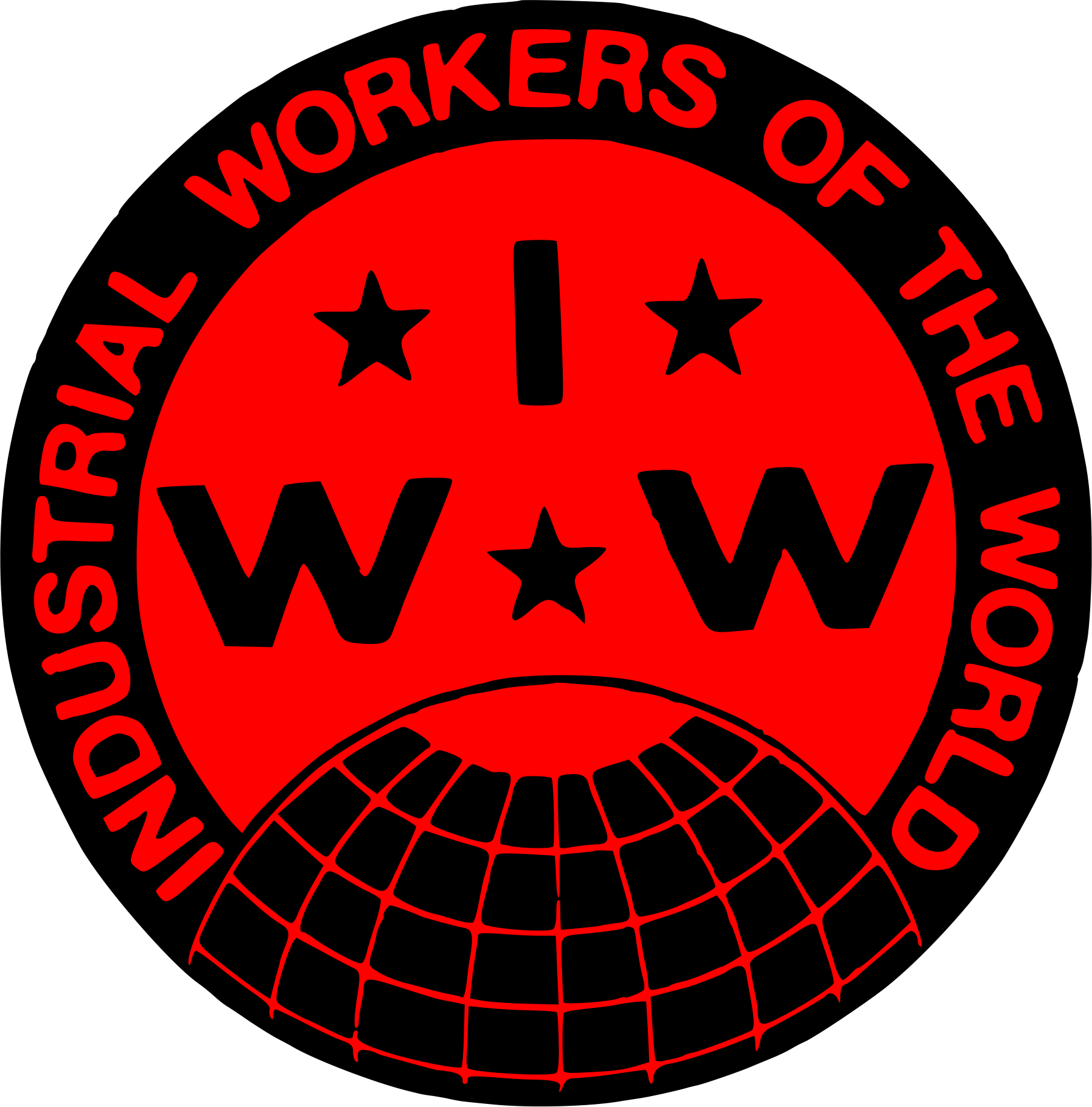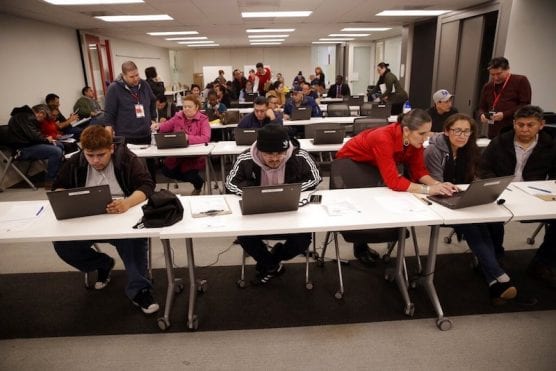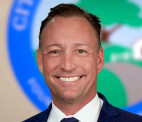While the numbers are still unprecedented, the claims do appear to be leveling off.
By Amanda Pampuro
(CN) — With 11% of the Americans eligible for unemployment insurance benefits receiving them, the U.S. Department of Labor reported a new record of insured unemployment on Thursday. By the agency’s count, at least 20 million people, or about 6% of the total U.S. population, is out of work.
“The Covid-19 virus continues to impact the number of initial claims and insured unemployment,” the report explains. “This marks the highest level of the seasonally adjusted insured unemployment rate in the history of the seasonally adjusted series.”
Initial claims for unemployment benefits appear to be leveling off with 4.4 million claims filed last week, down from 5.2 million claims the previous week. This decrease comes as many state unemployment agencies catch up on a backlog of claims, and money trickles into pocketbooks from the $2.2 trillion CARES Act, short for Coronavirus Aid, Relief and Economic Security.
The Department of Labor used covered employment of 145,671,710 in its calculation, defining that term as American who are “unemployed through no fault of their own,” while also meeting certain work and wage requirements.
On average over the last month, an average of 5.5 million Americans filed initial claims for benefits each week.
Many more paychecks shrank, according to an April 3 Pew Research Center report that estimates 1 in 4 Americans are working reduced hours.
Investment firm Goldman Sachs projects unemployment will reach 15% by the end of the third quarter with few opportunities for re-employment.
The mountainous unemployment rate coincides with mounting pressure for state governments to relax stay-at-home orders and send people back to work.
“At some point people are going to have to back to work,” said Jeffrey Zax, a professor specializing in labor economics at the University of Colorado Boulder.
When and how soon will be determined by each state government.
“It’s easy for an individual to say, is it worse for me to stay at home and not work, or is it worse for me to go out into the world and continue in my job, but to counter the risk of getting sick?” Zax said. “What’s hard for an individual to do is to say, if I go out, how does that impact the health risks of others? The government has a very explicit responsibility to assist in that.”
Without downplaying the earth-shattering economic side effects of the pandemic, many economists argue social distancing now saves both lives and money in the long run. One recent cost-benefit analysis conducted by researchers at the Massachusetts Institute of Technology connected speedy economic recovery with strict public health policy during the 1918 Spanish flu pandemic.
Colorado saw the largest increase in claims last week, with 58,246 news applications filed, followed by New York and Missouri. In total over the last month, the Centennial State received 279,199 applications, while paying out $74.1 million in benefits last week, the state Labor Department reported.
Payments from the federal Paycheck Protection Program will allow the owner of one independent bookstore to bring back employees this week.
“We have everybody back on payroll now. We have some folks working from home, some folks working here, and some folks still on the status of unpaid leave,” said Len Vlahos, owner of Tattered Cover Book Store, which has three locations in the Denver metro area. The stores closed to the public at 6 p.m. on March 16, but have since seen a spike in online sales.
Still Vlahos remained anxious about the future: “Financially, how comfortable people are going to be going out and shopping?”
As Colorado Governor Jared Polis switches the state from a stay-at-home order to a safe-at-home order on April 27, Tattered Cover hopes to run curbside book delivery.
When the government says it’s safe to open again, Vlahos said: “We will make sure we have a rigorous policy of sanitizing and social distancing. If there are a lot of restrictions on how people can go out and congregate, then we may have limited hours, we may allow only a certain number of people at a time. We may require masks.”
With some states allowing stay-at-home orders to lapse, and others tightening restrictions, Nevada Governor Steve Sisolak is reviewing options for the state facing the third-highest rate of insured unemployment in the country. At 13.7%, it trails Michigan and Rhode Island, with 17.4% and 15% of residents on benefits, respectively.
With a high tourist economy and service industry, many Nevada businesses are likely to struggle to adapt operations to social-distancing guidelines. While Las Vegas Mayor Carolyn Goodman is pressing for the strip to reopen, her stance is not without opposition.
“We want people back to work, but it has to be safe and secure, and we don’t want workers to be part of an experiment. Workplaces need to be safe and healthy — not a Petri dish,” Geoconda Argüello-Kline, secretary-treasurer of the Culinary Workers Union Local 226, said in a statement.
The tension is felt across the state. In Fernley, Nevada, east of Reno, one casino bartender worries about returning to work too soon.
“The casinos are going to be fine,” said Lisa, who asked that her last name not be used. A bartender of 14 years, Lisa is now receiving state unemployment benefits. “As soon as they open up, those casino people are going to come in. And, with people being out as long as they have, a lot of them are retired with fixed income, so they’re saving up all this money, not going in there every day.”
Lisa doesn’t want to babysit customers when it comes to enforcing social distancing. As a single mom, caring for her own mother through chemotherapy, she said she’s worried that she’ll contract the virus and spread it to her family.
“You can always make money,” Lisa said. “You can’t bring back somebody’s life.”
The U.S. Department of Labor report can be viewed below:
[Open .pdf in new window]
Like this:
Like Loading...
Related





 Tweet This
Tweet This Facebook
Facebook Digg This
Digg This Bookmark
Bookmark Stumble
Stumble RSS
RSS

























REAL NAMES ONLY: All posters must use their real individual or business name. This applies equally to Twitter account holders who use a nickname.
0 Comments
You can be the first one to leave a comment.